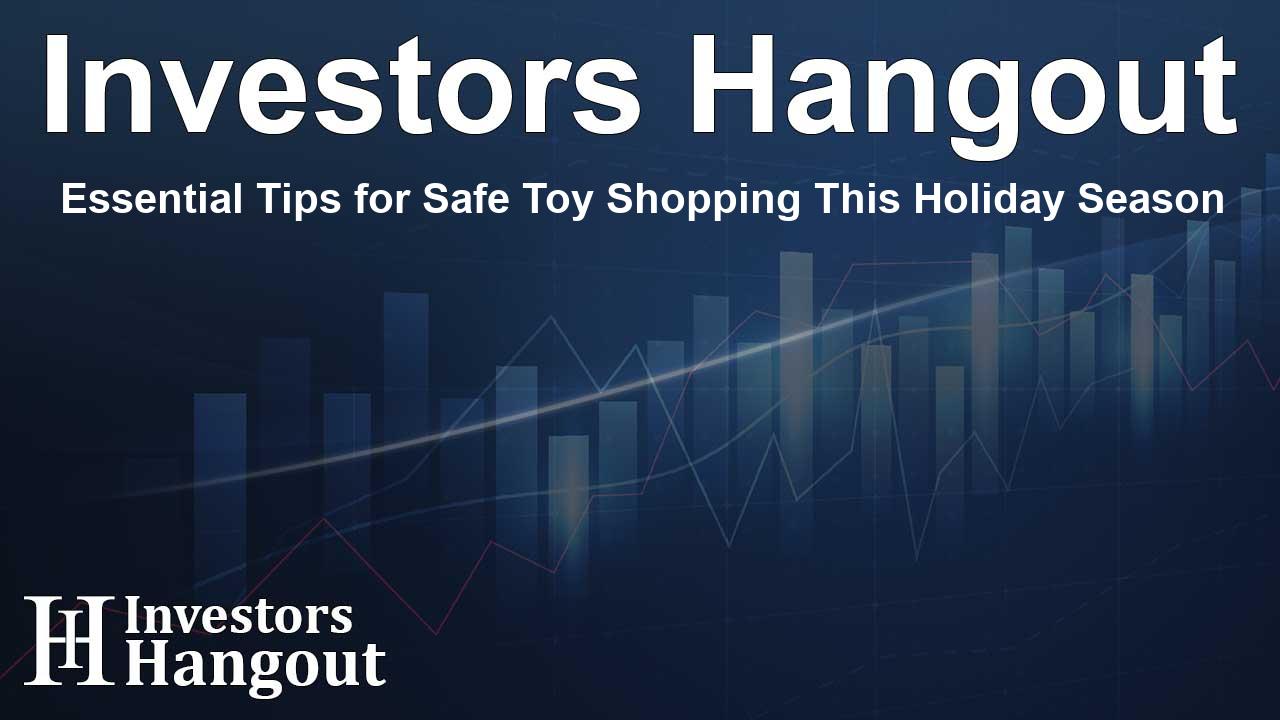Essential Tips for Safe Toy Shopping This Holiday Season

Understanding Toy Safety During the Holiday Season
The Toy Association is committed to ensuring that all children have a safe holiday filled with joy and delight. This November marks the fourth annual "Toy Safety Awareness Month," aimed at enlightening gift-givers about the importance of selecting safe toys. With parents reporting increasing difficulty in distinguishing genuine toys from counterfeit ones, this initiative is more vital than ever.
Counterfeit Toy Awareness
Recent surveys indicate that nearly 75% of parents find it challenging to identify counterfeit toys, and around 47% have unfortunately purchased suspected fake toys online. Joan Lawrence, the "Toy Safety Mom" from The Toy Association, emphasizes that the toy industry adheres to over 100 stringent safety standards established by law. The objective of Toy Safety Awareness Month is to educate parents about avoiding counterfeit products that could endanger their children.
How to Avoid Counterfeit Toys
To ensure kid-friendly gifting this season, shoppers are advised to thoroughly research both the products and sellers before making purchases. Lawrence warns that counterfeit goods often come from sellers that neglect safety regulations, creating potential hazards for kids. Identifying these imposters can be tricky, especially when they mimic reputable brands.
Importance of Age Labels on Toys
Another essential tip from The Toy Association is to consistently follow age labels on toy packaging. These labels are not mere suggestions; they are critical for ensuring the safety of children. Toys designed for older children can pose serious risks to younger ones, particularly those under three years old who might be attracted to small parts that could lead to choking incidents.
Understanding Age Grading
Age grading is a practice based on developmental milestones, and parents should be vigilant about adhering to these guidelines. It provides insight into the types of toys suitable for different age groups. Parents should carefully inspect product descriptions and adhere to age recommendations to ensure a safe play environment.
Avoiding Risks from Non-Toy Items
In addition to selecting appropriate toys, families should be cautious of non-toy items like home decor, watches, or accessories, which may pose safety hazards. These items can contain small batteries or parts that can be harmful to young children if ingested. In particular, latex balloons, when deflated, are a choking hazard.
Importance of Trusted Brands
Lawrence reiterates the importance of shopping from reputable brands. Non-toy products do not undergo the same rigorous safety testing as toys, so it is essential to keep them out of children’s reach. Understanding the risks associated with non-compliant items is crucial for maintaining a safe home environment.
Keeping Updated on Product Recalls
Families are also reminded to stay informed about product recalls. While unlikely, recalls represent a vital safety mechanism ensuring that defective products are removed from circulation. Parents should regularly verify any toys purchased through third-party sellers or secondhand markets on platforms that keep track of recalls.
Why Recalls Matter
Lawrence points out that of the three billion toys sold in the U.S. each year, only a minute fraction leads to recalls. This demonstrates the stringent safety measures in place to protect children. Continuous collaboration with experts ensures that safety standards evolve with new products and innovations.
Final Safety Recommendations and Resources
Before finalizing holiday shopping, parents should visit reputable safety advocacy websites for further advice and resources. Engaging with campaigns like #ToySafetyAwarenessMonth allows families to access important tips, videos, and infographics shared across social media. Staying informed is part of ensuring a safe and enjoyable holiday season.
About The Toy Association
Founded in 1916, The Toy Association represents businesses involved in the toy industry, advocating for the benefits of play on childhood development. With a long-standing commitment to safety, the association has developed and revised America’s well-respected toy safety standards and continues to support the industry through advocacy and educational initiatives.
Frequently Asked Questions
What is Toy Safety Awareness Month?
Toy Safety Awareness Month is an initiative by The Toy Association to educate parents on safe toy purchasing during the holiday season.
How can I identify counterfeit toys?
Shoppers should research the seller and product extensively before making a purchase; avoid unfamiliar brands that lack safety certifications.
Why are age labels on toys important?
Age labels are crucial as they provide guidance on the developmental appropriateness of toys and help prevent toy misuse that can cause injury.
Where can I check for toy recalls?
Families can check for toy recalls on dedicated government websites that track product safety recalls regularly.
How can I support safe toy practices?
You can support safe toy practices by shopping from reputable brands and staying informed about safety tips and recent toy safety news.
About Investors Hangout
Investors Hangout is a leading online stock forum for financial discussion and learning, offering a wide range of free tools and resources. It draws in traders of all levels, who exchange market knowledge, investigate trading tactics, and keep an eye on industry developments in real time. Featuring financial articles, stock message boards, quotes, charts, company profiles, and live news updates. Through cooperative learning and a wealth of informational resources, it helps users from novices creating their first portfolios to experts honing their techniques. Join Investors Hangout today: https://investorshangout.com/
Disclaimer: The content of this article is solely for general informational purposes only; it does not represent legal, financial, or investment advice. Investors Hangout does not offer financial advice; the author is not a licensed financial advisor. Consult a qualified advisor before making any financial or investment decisions based on this article. The author's interpretation of publicly available data shapes the opinions presented here; as a result, they should not be taken as advice to purchase, sell, or hold any securities mentioned or any other investments. The author does not guarantee the accuracy, completeness, or timeliness of any material, providing it "as is." Information and market conditions may change; past performance is not indicative of future outcomes. If any of the material offered here is inaccurate, please contact us for corrections.